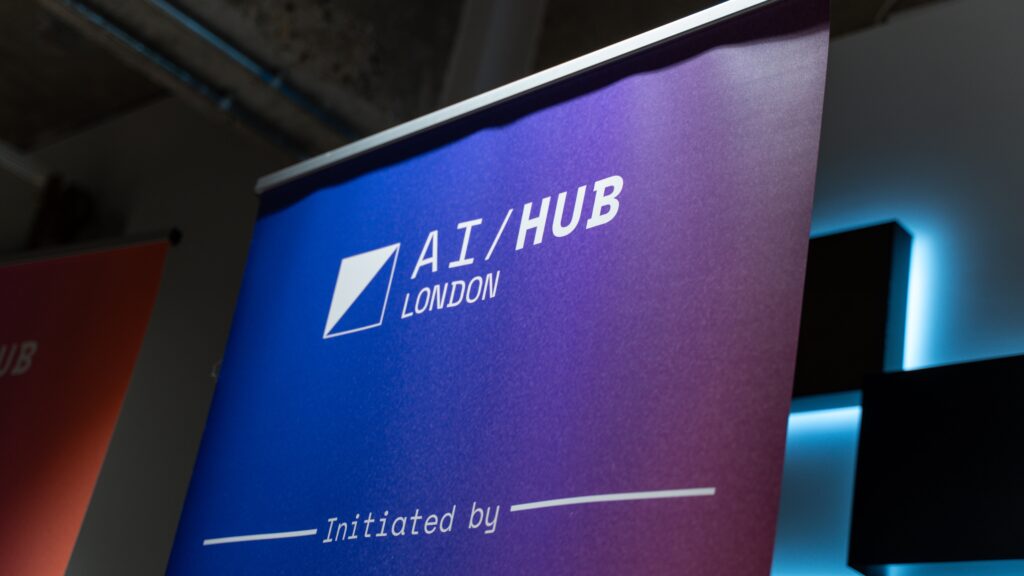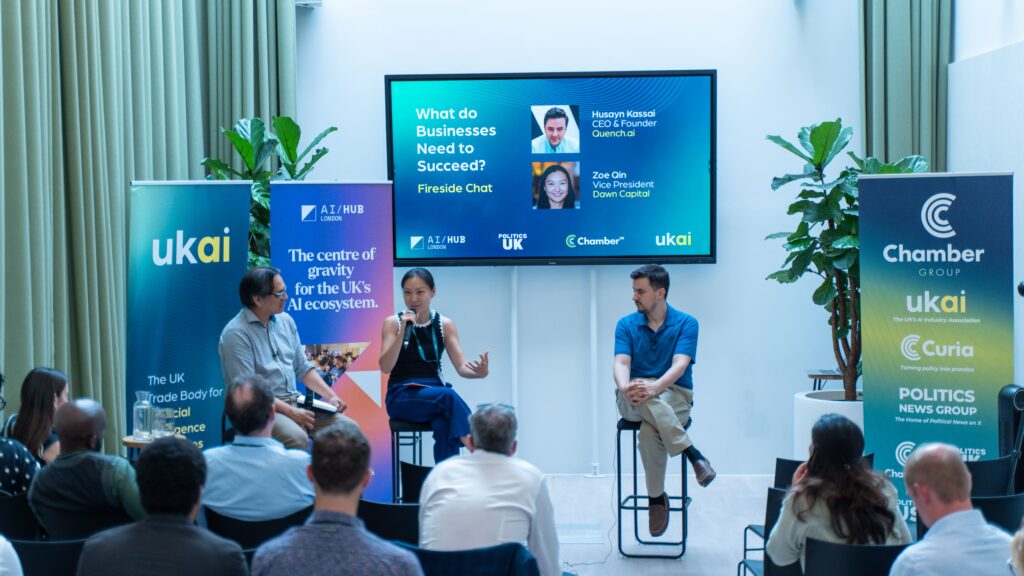To close AI trade body UKAI’s recent AI Opportunities Action Plan Six Month Review, CEO Tim Flagg sat down with Husayn Kassai (Co-founder of Quench.ai) and Zoe Qin (Vice President of Dawn Capital) to discuss what UK businesses need to make the most of AI opportunities.
The conversation ranged from the dangers of hype and the gap between promise and delivery, to the need for more “grassroots” adoption and the role government should play in enabling innovation rather than slowing it down.
AI Opportunities: From Hype to Reality
Half a year on from the release of the Government’s Opportunities Action Plan, both speakers offered a reality check.
In answer to Tim Flagg’s kick off question (what are the main AI priorities of UK businesses?), Kassai warned that a gap remains between the promises of AI and what businesses are actually experiencing. The root of this, he explained, is that large cap builders of foundational models are incentivised to exaggerate the potential of their models to keep share prices high. He labelled this effect a “hype cycle”.
“A big barrier is the misunderstanding, the hype, and the gap to reality.”
– Husayn Kassai, Co-founder of Quench.ai
He and Zoe agreed on the next point he made: that British AI industry needs more “grassroots” adoption, as Zoe labelled it. This, she explained means empowering employees at every level to experiment with AI in ways that directly solve the problems they face day-to-day. In both Zoe’s and Husayn’s view, uptake is far more successful when driven from the bottom up, rather than imposed by management through top-down mandates.
Where AI is Taking Hold
Next, Zoe outlined sectors where AI is already making tangible impacts. For example, she said “there’s a lot of excitement” about AI within the education sector and how the technology can be used to deliver better for students. She also spoke of nascent use cases in industries such as construction or manufacturing, but noted those were “earlier in maturity.”
Zoe explained that AI, to her mind, AI is making the biggest impact in the legal and healthcare sectors. She explained to the audience that tight margins in the former, and overstretched practitioners in the former, mean that AI tools can have quick impacts to ease workloads, improve efficiency and address urgent, pre-existing pain points.

How Government Can Help
When asked where government could best help, Hussain identified two priorities. First, he said, was clarity – noting that many companies are currently trying to comply with “five or six frameworks that are all kind of half-built.” Even light-touch guidance, he explained, would give people confidence they would not face penalties later for doing something wrong.
Second was procurement. Government, he said, is a huge customer but “incredibly slow and complex to work with.” Reforming procurement processes to allow earlier-stage companies to sell into public sector clients would, he said, be “a game changer.”
Zoe, argued that “a lot of it comes down culture” – creating an environment where experimentation is encouraged but within clear boundaries. She described how some companies have set up “sandboxes” to allow people to test AI tools safely without risking customer data or core systems, while others have established internal AI councils or working groups to share ideas and best practices. These, she told the audience, are essential “forums for sharing ideas and best practices.”
Tim Flagg closed the discussion by noting that AI “is powerful, but it’s not magic” – it needs structure, direction, and, most importantly, to be used to solve real problems.

